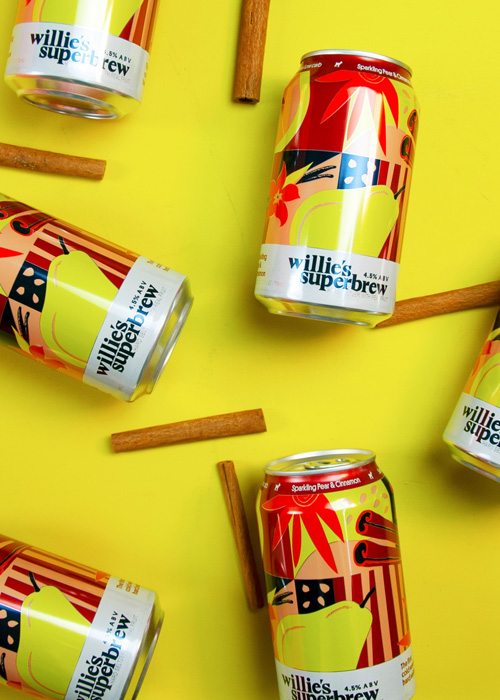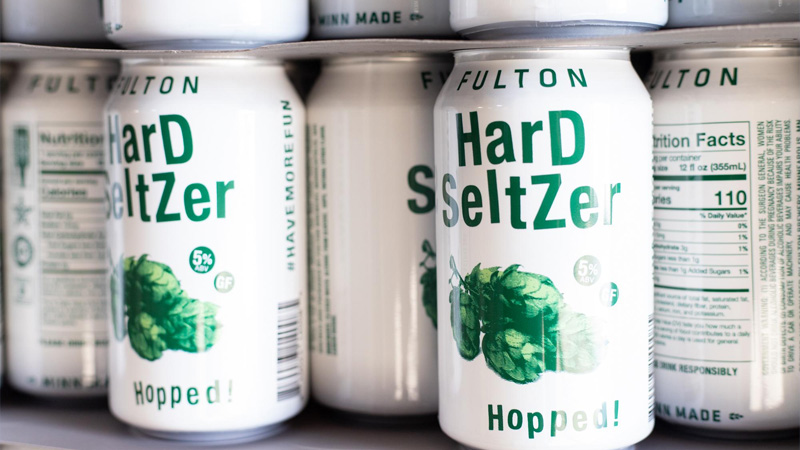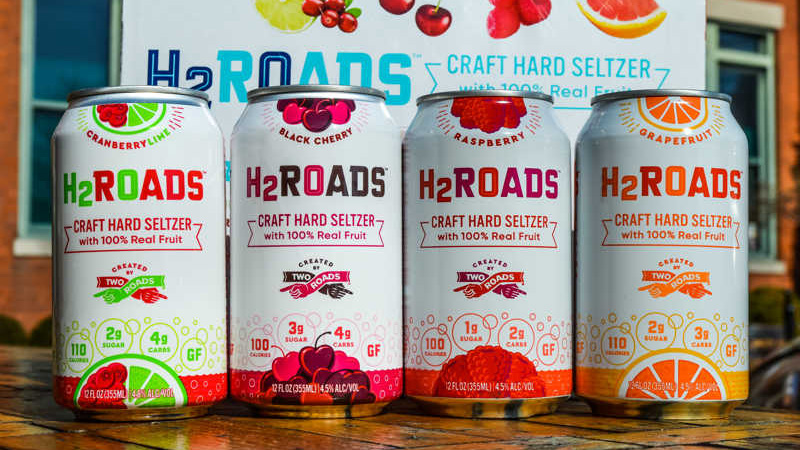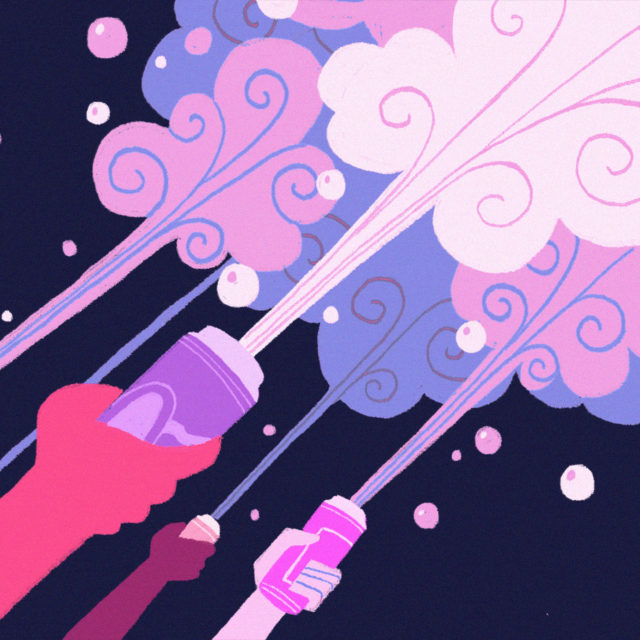So intoxicating are the sales figures from the two leading hard seltzer brands that it’s easy to forget there are any other players in the space.
In the 51 weeks ending Dec. 19, 2020, Mark Anthony’s White Claw posted dollar sales of $2 billion while Boston Beer’s Truly hit $956 million, according to Nielsen data. By October, the combined sales of both brands had exceeded the $2.5 billion valuation some market analysts were predicting for the entire hard seltzer category by the end of 2021.
While White Claw and Truly currently account for roughly 75 percent of the seltzer market, when you factor in sales of the eight leaders from other macro brands, the top 10 best-selling seltzers command 96 percent of market share. Yet, none of this is to say the remaining 4 percent doesn’t deserve our attention, for it is this segment that comprises the major “craft” players — independently owned brands which, just as we’ve seen in beer, are driving innovation through ingredients and production techniques rather than just line extensions.
They do so not just because it is in their DNA as craft producers, but to stand out against billion-dollar booze conglomerates with multimillion-dollar marketing budgets and a stranglehold on distribution channels.
With the continued might of White Claw and Truly, the need for innovation will only grow next year. So what should we expect to see in craft hard seltzer 2021?
Craft Seltzer Innovations
Part of the impossible genius of hard seltzer’s success is the sheer simplicity of its formula. Inspired by the vodka soda and designed to mimic the light profile of nonalcoholic flavored seltzers, the leading brands base their recipes on a blend of brewed cane sugar alcohol and natural flavorings.
With barely perceptible flavor differences, standing out in the space therefore requires marketing might — think Pepsi versus Coke — or offering a discernibly different profile. For craft producers, the natural fit is the latter.
“More and more players are coming in with real fruit products, and I think that’s an understandable offshoot,” says Phil Markowski, head brewer of Connecticut-based Two Roads Brewing Company.
By using 100 percent real fruit for the brand’s H2Roads line of seltzers, Markoswki can produce a more natural tasting product than the market leaders, while exhibiting the same commitment to quality ingredients that his brewery is known for in the beer space. The brand makes sure consumers are aware of this by printing the words “100% Real Fruit” front and center on cans.
And should drinkers decide to pour the seltzer into a glass, the vivid hue imparted by the real fruit should make the difference clear to all (excuse the pun).

Massachusetts-based Willie’s Superbrew is another proponent of fresh ingredients and includes fruit and spices during the production of its seltzers. The brand’s founder, Nico Enriquez, predicts quality ingredients and new flavor combinations will further fuel innovation in the craft seltzer space this year.
In November 2019, Willie’s became the first seltzer brand to offer a seasonal release when it debuted its Pear & Cinnamon flavor. The release proved successful and prescient, with a number of other seltzer producers (large and small) introducing seasonal flavors like pumpkin spice and Peppermint Pattie in 2020.
“Seltzer slows down at the end of Q3 and in Q4, so we need to continue being part of the conversation,” Enriquez says. Given the positive response from consumers, Enriquez expects seasonal releases will now become part of the strategy for seltzer brands during warmer months.
Further down the line, he thinks the category will take more cues from the beer space and soon turn to hops for innovation. On paper, it seems like a smart play. The numerous varieties and different techniques for adding them during production open a world of new flavor possibilities. It also extends a branch to traditional craft beer drinkers who may be seltzer-skeptical.
Enriquez says this development may not arrive on a broad scale for another year or so, though some producers, such as Minneapolis’s Fulton Brewing, are already in on the action.
Hops aren’t the only way in which craft producers are trying to entice beer drinkers with familiar techniques and terms. New York’s Evil Twin Brewing offers a plethora of “Pastry” and “Milkshake-Style Pastry” seltzers through its Evil Water line. Arriving in 16-ounce cans with attractive artwork, and containing none of the typical nutritional info that’s common on macro seltzers, the release seems like an obvious play for haze bros rather than calorie counters.
Such innovation will hardly challenge the established dynamic, nor are we likely to see White Claw or Truly come up with rival versions. But both Enriquez and Markoswi say it’s important for craft producers to continue innovating and pushing the category’s boundaries.
At Two Roads’ experimental Area Two brewery and taproom facility, the brand last year offered what is surely the most experimental take on seltzer to date: The Dirty. Aged in gin and vermouth barrels then blended with olive juice, the nitrogenated 13 percent ABV seltzer was served exclusively on tap.

Besides being extremely limited by the availability of gin and vermouth barrels, Markowski notes that The Dirty was never intended to showcase the future of hard seltzer.
“I think it’s just a fun, cutting-edge, perhaps provocative thing to do,” he says.”Our goal is to bring people into the Area Two facility, and then have them walk out with an expanded definition of what beer and other beverages can be.”
Bringing Hard Seltzer to the Bar
One thing that sets seltzer’s 2020 success apart from other types of alcohol is its lack of on-premise presence prior to the pandemic. Hardly any of the growth it enjoyed in 2020 can be put down to lengthy bar and restaurant closures. But many believe this will be the year both craft and macro seltzer make inroads in the on-promise.
Bump Williams, a beer, wine, and spirits analyst who runs the consulting firm Bump Williams Consulting (BWC), says three main factors fueled the 2020 growth of hard seltzer. Not only did more consumers turn to the category, he says, but the number of purchases per consumer and the size of each purchase increased on average across the board.
“The No. 1 category where hard seltzers are sourcing shoppers from has been wine and spirits,” Williams says. “No 2 is domestic light beer.”
When bars and restaurants begin to safely reopen this year, it’s only natural that at least a fraction of these new seltzer drinkers will continue to eschew wine or light beer in favor of seltzers. The savviest operators are already aware of this.
“A lot of on-premise retailers have made it clear to me that their growth strategies for 2021 and 2022 are to capitalize on the health and wellness craze, to expand the presence of packaged hard seltzers throughout their entire chain or business operations, and to find the right partner that can produce a high-quality, sustainable, kegged hard seltzer,” Williams says.
Jason Murphy, beverage innovation manager for Buffalo Wild Wings (BWW), agrees that seltzer’s success hasn’t previously translated from the off-premise to the on-premise. Still, Murphy plans on mandating between four and eight packaged hard seltzers — a mix of national, regional, and local brands — at BWW locations this year. (Until now, locations have only had to carry White Claw Mango and Truly Wildberry.)

“We know there’s guest interest there, so if we can start to crack the code a little bit and get a little piece of the pie, it would be a huge win for us,” he says.
With over 90 percent of BWW’s total beer volume sales coming from tap sales, draft seltzer is an avenue Murphy is also excited about. To date, Truly has been the only major brand to experiment with seltzer on tap, and Murphy says the results have so far exceeded his expectations. At the 150 or so BWW locations that serve both packaged and draft Truly, tap pours have consistently been the better performer.
In locations that offer craft hard seltzer on draft, Murphy says the results are even more encouraging. In its Texas outposts, BWW serves 12-ounce pours of Deep Ellum Brewing Co.’s Blind Lemon. Not only is the local offering outselling Truly on a velocity basis, it’s performing on par with many craft beers.
In some respects, Murphy says craft seltzers are an even better fit for tap lines than macro brews. Not only are traditional “craft” drinkers more accustomed to tap pours, the fact that many craft seltzers are brewed with real fruits gives them an advantage when served in a glass: their color.
“It’s eye catching,” Murphy says.
Craft vs. Macro: The Bigger Picture
With continued innovation and the increased availability in bars and restaurants on the horizon, hard seltzer drinkers have much to look forward to in 2021. And as the category continues to gain momentum (and drinkers), there are promising signs for smaller brands, too.
Willie’s Enriquez says one of the early stumbling blocks for hard seltzer brands — even the biggest players — was the fact that distributors had little experience with the category and were initially skeptical of its appeal. Now that both issues have been put to rest, Enriquez says craft brands will benefit from distributors looking to diversify their portfolios and increase revenues with more expensive brands.
He’s confident that drinkers, too, are willing and ready to trade up. “Consumers are now more educated on the category,” Enriquez says. “We always see that when the category gets more mature, consumers go premium.”
The strides that smaller brands have already taken are not without note. It took decades for craft beer to gain its current 12.5 percent share of beer, flavored malt beverages, and cider sales (per Nielsen data). In the seltzer space, craft brands already account for 4 percent of sales.
Much like everything else in hard seltzer’s short history, knowing just how much market share smaller brands can steal from the major players remains impossible to predict. But one thing that all, including BWC’s Williams, agree on: “It’s a David versus Goliath scenario.”
This story is a part of VP Pro, our free platform and newsletter for drinks industry professionals, covering wine, beer, liquor, and beyond. Sign up for VP Pro now!
